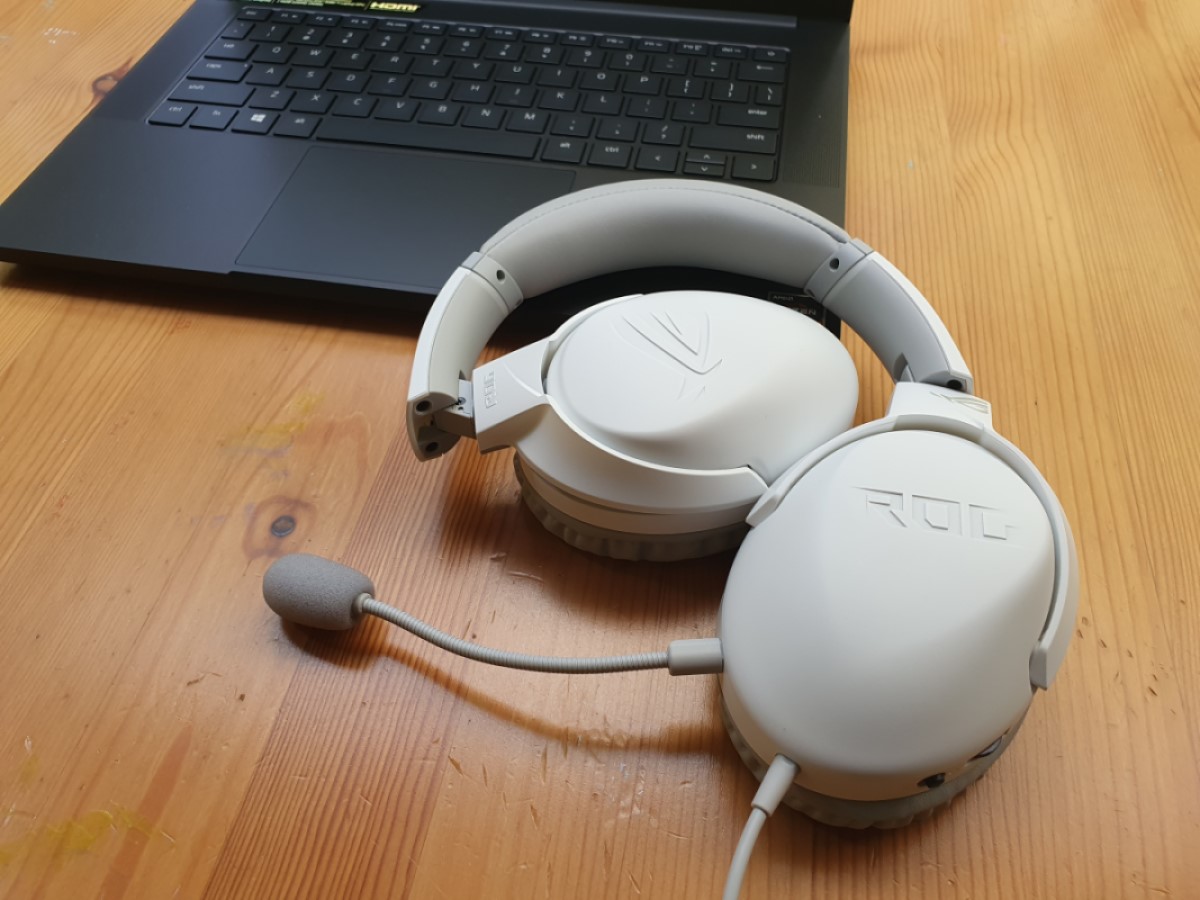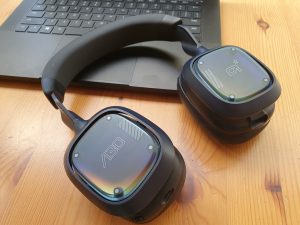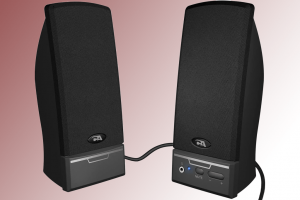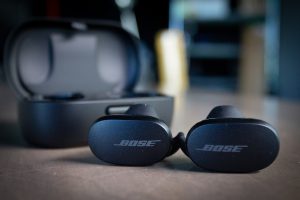

The Asus ROG Strix Go Core sits in a line-up that includes the ROG Strix Go, ROG Strix Go BT, and ROG Strix Go 2.4. These all vary a little in functionality– generally in regard to their connectivity– but they sport roughly the very same design. Naturally, the advantage of this is you can pick out the one that fits your needs, without paying for all the unnecessary bonus.
That stated, the Go Core’s affordable $79.99 price tag stays type of misguiding. Yes, it’s the simple 3.5 mm alternative of the lot and the most affordable, however it’s no less adjusted for player life, sporting functions you would expect to see in a more superior gadget. They include good audio drivers, an extremely lightweight design, and folding earcups– elements that make it one of the most portable and budget-friendly mid-range headsets you can find.
Keep in mind: This evaluation belongs to our ongoing roundup of the very best gaming headsets. Go there for additional information about contending items, what to look for in a gaming headset, and purchasing recommendations.
Asus ROG Strix Go Core Moonlight White: Build and mobility
The advantage of the Go Core’s exceptionally light-weight style is obvious: Most gaming headsets contribute around 300 grams to the weight of a satchel or bag, but the Go Core lightens the load considerably, weighing simply 252 grams (about the weight of 10 nickels)– hence the “Go” in the name, which is a nod to the headset’s outstanding mobility. Its lightness also guarantees it’s barely visible on your head– to me it felt like it made simply the faintest contact with my ears, and that sensation remained after hours of gaming, when I ‘d generally anticipate to feel some discomfort.
The earcups rotate a complete 180 degrees and fold upwards to 90 degrees, allowing you to merely load the headset up into a compact bundle and tuck it away in a bag without bits protruding and jutting into you– or worse, getting broken off by effect. It’s a small benefit however one that you’ll find incredibly useful once you discover a case to fit it in– since the headset doesn’t ship with one.
Naturally, the rotating cups likewise assist in the comfort stakes too, giving you plenty of area to move your head. Another benefit is you can lay them flat on your chest– an easy benefit that let me cool down my head while I waited between video games. Ah, to have a completely cool headset one day … As for the rest of the Go Core’s style, it’s no less lovely. The earcups feel very plush, each one sporting a light-weight layer of memory foam that crushes down easily, keeping your ears feeling pressure-free. And they are a good size, so they fit well without sitting uncomfortably on top of your ears.
The covering material is a thick leatherette that feels really soft, but as I hinted at earlier, can get a little hot at times. They don’t get spicy-jalapeno hot, however just enough to need to take them off from time to time. This is a regrettable however required effect of how the headset is created to block out ambient noise– it depends on the company seal the material makes around your ears, since there’s no active noise-cancellation innovation onboard.
Above the earcups there’s a flexible metal headband with plenty of bend. Although the headband’s sections aren’t numbered, it does click as you extend it, so it’s easy enough to remember your ideal length by listening to the number of clicks it makes. Up top, there’s more leatherette-covered cushioning, so you get comfort all over.
It’s motivating to see that Asus hasn’t ignored design as a component of its peripherals. My Moonlight White Go Core looked remarkably fresh, its dual white and gray color scheme brilliantly contrasting with the common black that has increased in my gaming den.
I also really liked the embossed ROG and Asus logos that decorated the sides of the cups, which provide a sense of familiarity with other Asus ROG products that I’ve delighted in using recently.
Connectivity and compatibility
While some video gaming headsets pack in several connectivity choices, my Go Core featured a basic 3.5 mm earphone cable for a wired connection. Too simplistic? Restricting? Hardly. That still grants you access to practically any device you might have at home through a basic 3.5 mm audio or combination port, although the disadvantage is you’ll be connected to that gadget while you’re utilizing it.
I primarily plugged into my desktop and laptop PCs, but the Go Core will simply as quickly hook up to a Mac, mobile phone, PlayStation 5, Xbox X/S, and Nintendo Switch– to name simply a couple of.
This, there’s another benefit to a 3.5 mm headset: Making connection a basic wired affair indicates Asus can keep the cost down to simply $79.99 USD. If you can’t live without wireless connection, anticipate to pay $120 more for an Asus ROG Strix headset, since the nearby priced cordless variation, the Asus ROG Strix Go 2.4, ships for $199.99.
On unusual celebrations I have actually received a headset with an uncomfortable 3.5 mm cable, so it was worth scoping out how the Go Core’s fared in contrast. There was no fixed that might cause distortion in sound quality.
One little peeve, though, is the primary cable isn’t detachable from the headset proper, so if you do occur to in some way cut through it, or succumb to a Instagram headphone-cutting influencer, your headset will be toast.
On the upside, Asus supplies you with an audio splitter cable that separates your audio and microphone into dedicated connections, so you will not require to go buying one; you’ll only have to ensure you’ve got your headset properly picked in your audio settings to make complete usage of it.
Audio efficiency
Asus states the Go Core’s 40mm Neodymium drivers produce sound with a frequency reaction of in between 20Hz and 40KHz, which is thought about decent for a video gaming headset.
To evaluate the audio efficiency, I tried the Go Core in a panoply of PC video games, some fairly new, like Elden Ring and Sniper Elite 5, and some older classics like Call of Duty: Black Ops. Entirely, it showed a capable entertainer. From multiplayer deathmatches, to solo explorations in Elden Ring’s ‘the Land Between,’ the noise was provided plainly and reasonably– adequate to immerse me completely in my gameplay.
Three quarters of the audio in my video games was in the higher tonal end of the spectrum– so it was easy adequate to confirm the quality of the Go Core’s highs and mid tones– sounds like the clang of gunshots and ricochets sounded crisp and natural. The headset also communicated quieter climatic noises extremely clearly– like birds’ chirps, the hum of a powerplant, or the swoosh of chopper blades overhead.
I needed to wait a bit longer to hear enough bass to make a judgement, but finally got my possibility when the Call of Duty: Black Ops soundtrack cut in between multiplayer rounds. Asus states the bass has actually been optimized for a “deep immersive experience,” and judging by the deep manufactured notes I heard, I would concur.
If I might nit-pick just something about the audio, it would be that the Go Core in some cases sounds a little distant in multiplayer matches, where action taking place close by might have been delivered with fuller audio impact. That’s to be expected thinking about the Go Core does not have spatial audio software application support, which had it been consisted of, would have brought a fullness and directionality to the noise. Still, apart from being a small hassle it never actually made a difference to my gameplay.
On the ambient noise front, though, the Go Core fares reasonably well, thinking about there’s likewise no devoted active sound cancellation to mention. The company seal provided by the leatherette product in the earcups offers a sound barrier that, on the whole, does an acceptable task keeping a variety of sounds at bay.
To be sure, neighboring discussions, traffic sound, and the clinking of dishes, were all sounds that became faint and barely perceptible to me with my cans on. Just the cry of a baby and a car alarm pierced through my playtesting, with everything else primarily locked out so that I had minimal interruptions.
Accordingly, if you’re tossing up whether you need to invest the additional money to purchase the $249.99 ROG Strix Go BT over the Go Core for the benefit of getting ANC and you do not need the Go BT’s Bluetooth connection, you probably need to just choose the Go Core that does a respectable task cutting out sound– and for $170 more affordable.
Microphone performance
The Go Core includes a removable cardioid boom microphone that slots in easily to the front of the left earcup. It bends nicely and has a good length, so it falls near your mouth. In package you also get a pop filter that slides over the microphone idea to dampen your voice.
Taking a look at the mic specifications exposes they’re fairly basic for a midrange headset– it has a unidirectional pick-up pattern with a frequency response of 100Hz to 10KHz and a sensitivity of -45 dB. That last spec ways you can speak very silently, and your colleagues won’t lose out on hearing all your gaming tips. My testing proved it might finish the job– it replicated my voice naturally and loudly in causal video gaming talks.
Unlike some headsets in the Asus ROG range, the microphone does not included AI noise cancellation, but I discovered this made very little effect, because the unidirectional mic only truly picked up sound right in front of it– my voice jabbering relentlessly on Discord. Mentioning Discord, the Go Core is ranked Discord and TeamSpeak licensed, so expect it to work perfectly with each.
Software support or no?
It’s reasonable to state that the Go Core cuts corners a little on the unneeded extras, which allows Asus to deliver it for such an affordable cost, but that likewise implies it does not have bundled software application assistance. That limits you to your in-game or gadget settings need to you wish to adjust EQ, microphone settings, or use surround sound support.
The Go Core may not suit you if you’re an e-sports player or serious audio tinkerer wanting a little extra control over your settings, however if you’re just a casual gamer you will still get by perfectly fine. Plus, you can easily change the volume and silence the microphone physically by means of the left earcup.
Should you buy the ROG Strix Go Core?
The ROG Strix Go Core offers a worth proposal that’s difficult to resist, covering all your basic video gaming audio requires for simply $79.99. You get decent sound quality, extreme portability, and the convenience of 3.5 mm connection, and in a headset that looks sleek and advanced.
Real, there’s no ANC and spatial audio– or bundled software assistance for that matter– however that just means you can invest less time fussing and more quality time gaming.








